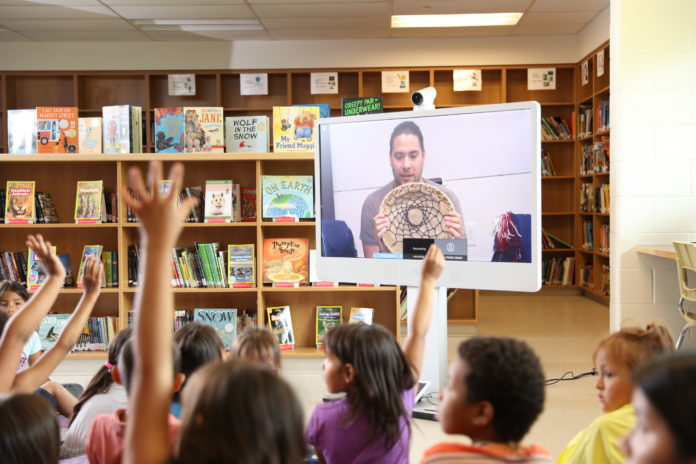TakingITGlobal relies on CDW Canada to procure and ship Cisco hardware across the country
By Mike Martin
In 1999, two young Canadians, Jennifer Corriero and Michael Furdyk, envisioned an organization that would create positive change in local and global communities by inspiring, engaging and informing young people around the world. The result was TakingITGlobal, a Toronto-based non-profit organization dedicated to leveraging technology to engage students in real-world problem solving. Today, TakingITGlobal offers programs and projects to youth in more than 5,000 schools and 153 countries.
In 2015 the organization became a partner in Cisco Canada’s Connected North program. Connected North is designed to enhance education in remote communities by making learning more engaging for students. The program achieves this by giving these communities technology that enables interactive video sessions between students and educational venues such as galleries or museums. “Students in northern communities often don’t have the same opportunities to go on field trips or engage experts that students in more urban areas have,” said Michael Furdyk, co-founder and Director of Innovation at TakingITGlobal. “Through Connected North we’re able to enhance their classroom experience.”
Immersive technology improves learning experience
Schools and educational organizations participating in Connected North use two-way, high-definition Cisco TelePresence video technology. When TakingITGlobal became involved in Connected North, the organization needed a partner who could help purchase, ship and support the hardware. “Cisco has fairly complex ordering and business processes,” Furdyk explained. “We needed help navigating those.”
After talking to Cisco and looking at its options, TakingITGlobal chose CDW Canada to help the organization bring Connected North to more communities. “CDW Canada has a national presence and they’ve been able to help deliver technology efficiently to our partner organizations across the country, such as the Vancouver Aquarium and the Winnipeg Art Gallery, that help us get content for our program,” Furdyk explained.
CDW Canada and Cisco Canada have helped TakingITGlobal grow Connected North by getting the correct technology out to the schools and educational partners as quickly as possible.
Furdyk noted this isn’t as simple as it might sound because most of the schools are in remote, hard-to-reach communities. “Knowing we have someone who can take care of all the procuring, licensing, shipping and support has been really helpful for us,” Furdyk said. “It lets us focus on our core mission of helping build a better future by supporting educators in engaging youth.”
When TakingITGlobal became involved with Connected North, the program was running in five schools. Today it’s available in 41 schools located in 35 different remote communities. Teachers and students are able to select on-demand, interactive content that suits their specific needs and connect with experts at educational or cultural institutions. Past sessions have included a virtual field trip to the Museum of Inuit Art in Toronto and a session with former Canadian astronaut Chris Hadfield on how to think like an astronaut. Students have also received a virtual field trip to a school in Africa. “We go to the schools, listen to their needs and design experiences that meet those needs,” Furdyk said.
How Connected North engages students
Students enjoy the Cisco TelePresence sessions Connected North enables, Furdyk noted. A Connected North evaluation in 2013-14 found 83 percent of students said the sessions made science more interesting and 81 percent said they learned more in a Cisco TelePresence class compared to a non-TelePresence class.
TakingITGlobal hopes to continue growing the Connected North program by demonstrating the benefits schools enjoy when they’re able to access better learning experiences. There are hundreds of schools in remote regions across Canada, Furdyk noted, so there’s plenty of room for growth.
“The feedback we’ve received from participants has been very positive,” he said. “We hope the program can be a model for how technology such as video and TelePresence can be used as a catalyst for learning.”







